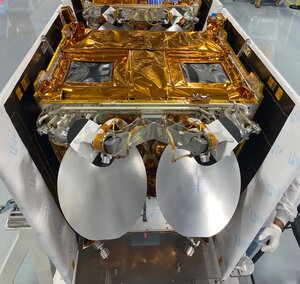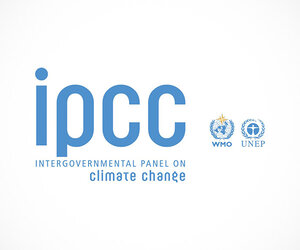Scientists gear up for ESA’s 2007 Envisat Symposium
More than 800 scientists from around the world will gather in Montreux, Switzerland, to attend the 2007 Envisat Symposium from 23 to 27 April to present and review results from ESA Earth observation satellites.
The objectives of the largest ESA Earth observation (EO) symposium ever held are to provide a forum for investigators to present results of ongoing research project activities using data from Envisat, ERS and Third Party Missions and to review and assess the development of applications and services.
"We are very pleased to host the symposium in Switzerland, an ESA Member State, and to welcome scientists from across the world," ESA’s Yves-Louis Desnos, symposium co-chairman and Head of Research and Development, said. "We anticipate a wealth of new scientific results to be presented, such as global change indicators, derived by exploiting data from the ERS and Envisat missions."
Previous Envisat and ERS Symposia have been held in Cannes, Hamburg, Florence, Gothenburg and Salzburg. Dr. Remko Scharroo of Altimetrics/National Oceanic & Atmospheric Administration (NOAA) told ESA that attending these symposia have always been highlights in his career and provided excellent opportunities to exchange the latest results obtained from the agency’s satellites.

"As so many researchers focus on different instruments aboard these satellites and their different uses, it is at these symposia where it all comes together. I have always returned from those symposia with the feeling that I learned a lot and also contributed my small share to the better understanding of the satellites and to their applications in Earth sciences," Scharoo said.
Themes of the 2007 symposium include the atmosphere, climate, oceanography, cryosphere, land and hazards. Within these themes, almost all fields of Earth science will be addressed, such as landslides, ocean colour, sea surface temperature, sea ice, volcanoes, earthquakes, floods, fires, winds and waves and oil spills, among others. Eight hundred presentations selected by peer review will be given by ESA Principal Investigators travelling from more than 40 countries worldwide. Numerous demonstrations are also planned for the week in the ESA and Industry exhibit areas.
The conference will include a special session dedicated to the joint ESA/European Commission Global Monitoring for Environment and Security (GMES) programme, including the GMES space component, Sentinel missions and contributions from national missions. There will also be a session dedicated to the use of EO in support of International Environmental Conventions in close collaboration with UN agencies, the World Climate Research Programme (WCRP) and the International Geosphere-Biosphere Programme (IGBP).

As the greatest environmental challenge facing the world today, numerous climate change studies and results will be presented at the symposium, further illustrating the findings of the latest Intergovernmental Panel on Climate Change (IPCC) report. Scharroo, for instance, will demonstrate how he was able to estimate a common annual cycle and trend of global and regional sea level rise of 3,2 mm a year by using multi-satellite radar altimeter data.
"Through the years it has been a plight to ever increase the accuracy of the ERS and Envisat altimeter data. That effort started with the ERS-1 absolute altimeter range calibration in 1991, and continued by providing precise orbits for both ERS-1 and ERS-2 to the user community. The symposium in Montreux will be the time to discuss the latest results, and I am sure I will return with new ideas to work on and new algorithms to implement," Scharroo added.
Radar altimeters, such as the one aboard Envisat, offer valuable information on the state of the ocean by providing measurements of the height of the ocean surface. Radar altimeters are fundamental instruments for globally monitoring continental ice-mass imbalance, floating sea-ice thickness and continental surface water levels in rivers and lakes – all indicators of climate change.

The impact human activities have on air quality will also be addressed. Nitrogen dioxide (NO2), a mainly man-made gas, can cause lung damage and respiratory problems and leads to the production of ozone in the troposphere. Envisat is able to measure NO2 because of its onboard Scanning Imaging Absorption Spectrometer for Atmospheric Chartography (SCIAMACHY) instrument, which records the spectrum of sunlight shining through the atmosphere.
Using data from Envisat, scientists developed in 2003 a high-resolution global atmospheric map of nitrogen dioxide (NO2) pollution, which made clear just how human activities affect air quality. Scientists developed another global atmospheric map using Envisat data in 2006, allowing changes to be monitored.
"At the Envisat Symposium I will present our findings regarding the trends and sources of NO2 emissions, and I hope to learn more of the latest results from international colleagues working on Envisat data," Dr. Ronald van der A of the Royal Netherlands Meteorological Institute (KNMI) said.
The symposium’s preliminary programme is now available online at http://www.esa.int/envisatsymposium.















 Germany
Germany
 Austria
Austria
 Belgium
Belgium
 Denmark
Denmark
 Spain
Spain
 Estonia
Estonia
 Finland
Finland
 France
France
 Greece
Greece
 Hungary
Hungary
 Ireland
Ireland
 Italy
Italy
 Luxembourg
Luxembourg
 Norway
Norway
 The Netherlands
The Netherlands
 Poland
Poland
 Portugal
Portugal
 Czechia
Czechia
 Romania
Romania
 United Kingdom
United Kingdom
 Slovenia
Slovenia
 Sweden
Sweden
 Switzerland
Switzerland
































